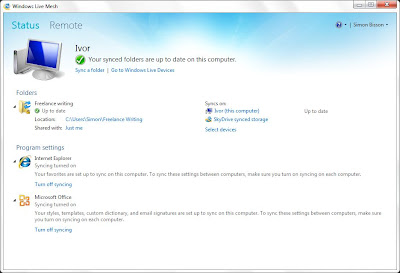Windows Live Essentials 2011

Microsoft has released the new version of its Windows Live Essentials software bundle, after a short beta period. Bringing together various tools that used to be bundled with Windows, or labeled as PowerToys, the Live Essentials package is Microsoft's answer to Apple's iLife and the Google Pack.
We've already looked at the beta and the beta refresh, and if you've used either of them (especially the recent beta refresh), then you'll find very little new in the final release. It happily installs over the beta, so you don't need to remove any old versions before getting the release code running.
So what's new? Much of what's in the final version was in the beta, something we've come to expect from the modern Microsoft. That means no change to the user interface, and a lot of bug fixes. Applications like the Windows Live Writer blogging tool and the Family Safety security application stay the same, as do Live Photo Gallery and Live Movie Maker.
The biggest change is to Live Sync, which reverts to its original name of Live Mesh and gains more diagnostic information around synchronisation status. There's also an increase in the online storage capacity, from the beta Live Sync's 2GB to what was the original Live Mesh 5GB. Most users use less, but there was a vocal campaign by unsatisfied users of the original Live Mesh which resulted in the increase. There are still some inconsistencies, for one thing Microsoft describes Live Mesh's storage as being part of the larger Live SkyDrive, but there's no way of passing files between Mesh's cloud and the rest of SkyDrive, and there's no support for Office Web Apps if you want to quickly edit a synced file on the go. We still miss the original Mesh's colour-coded folders, but there's no sign of them returning.
As well as syncing files, Live Mesh will synchronise Office settings (including styles, templates and email signatures) and Internet Explorer favourites. With the popular Xmarks browser sync tool shutting down in January 2011, Live Mesh will be the best way for Internet Explorer users to keep bookmarks in sync between all their desktops, laptops and netbooks.
Live Messenger's new user interface takes some getting used to, especially if you use the new social network view. There's a lot to be said for a quick at a glance view of status updates from Facebook, and Live Messenger does a much better job of showing what's going on with your friends than tools like Digsby or Trillian. With support for Yahoo! IM and Facebook Chat, it's also a useful cross network tool, reducing the number of applications you need to install. The final version takes a business spin, adding support for LinkedIn, making the business social network part of your desktop. Now you can keep colleagues and contacts updated alongside friends and relations.
There are some issues with the new version of Messenger. HD video support means that it's now impossible to have a one-sided video conversation, and support for LinkedIn and FaceBook makes it a lot harder to use pseudonyms online. All in all, though, the new features outweigh the disadvantages, and we've found the new Live Messenger replacing third-party IM tools on our test PCs. You'll also find that the new GPU support in Messenger means that there's more CPU power to spare.
Live Photo Gallery and Live Movie Maker are slowly moving closer together, and in Live Essentials 2011 you can use Live Photo Gallery to edit and upload video to photosharing sites. There's a lot of code in common now, and you'll find that features in one appear in the other. Microsoft has used the final release to tighten up some of the metadata tools, including speeding up face detection and improving the Bing Maps-powered geolocation tools.
There are two ways to get Live Essentials 2011: you can download it yourself from Microsoft, or you can get it pre-installed on a new PC. It's clear Microsoft is hoping vendors do the latter, as tools like this do much to replace the inconsistent and often buggy mix of commercial and shareware software that comes with most PCs. Dell has already said that it's going to bundle Live Essentials 2011, and we'd hope that more vendors follow suit - and the quicker they do that, the better for the myriad end users who spend their first day with a new PC uninstalling software they never wanted.
Simon Bisson


